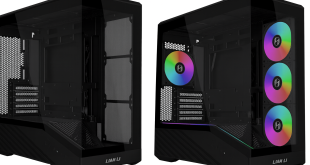GlobalFoundries on Friday confirmed that the first products to be made using the company’s advanced 14nm LPP [low-power plus] manufacturing technology had been taped out. The contract maker of chips did not reveal any details, but indicated that prototype chips had demonstrated “excellent” performance and yields. One of the customers, who will use the 14LPP is Advanced Micro Devices.
The 14LPP fabrication process developed by Samsung Foundry and licensed by GlobalFoundries shares a lot of elements with the 14nm LPE [low-power early] manufacturing technology, which has been used to produce various integrated circuits (ICs) for many months now. The 14LPP is expected to enable chip designers to create more complex system-on-chips that run at up to 10 per cent higher clock-rate and feature lower power consumption. The two process technologies share common design rules, but use different standard-cell libraries, compilers, etc.
“The performance-enhanced version of the technology (14LPP) is set for qualification in the second half of 2015, with the volume ramp beginning in early 2016,” said Jason Gorss, senior manager of corporate and technology communications at GlobalFoundries.
According to Mr. Gorss, the company started to tape-out products, which will be manufactured using the 14LPP a while ago. Tape-out is the final stage of the design cycle of an integrated circuit, the point at which the artwork of the IC is sent to a maker of photomasks. Once the set of photolithographic masks is completed and verified, it is directed to the contract manufacturer of the chip, which produces the first samples of the IC. If GlobalFoundries started a tape-out process, it means that samples of certain products are either in production or have been produced.
“Prototyping on test vehicles has demonstrated excellent logic and SRAM yields and performance at near 100% of target,” explained the official for GlobalFoundries.
GlobalFoundries remains on-track to begin high-volume manufacturing of commercial chips using 14nm LPP technology in 2016. The company is expected to produce a number of high-performance designs using the process. Just like in case of the 14LPE, customers of GlobalFoundries and Samsung Foundry will be able to use fabs of both producers in order to increase manufacturing volume of their chips.
Earlier this year Advanced Micro Devices confirmed that it had taped-out its first two products to be made using FinFET manufacturing technologies. According to unofficial information, AMD will use GlobalFoundries’ 14LPP fabrication process to produce its code-named “Summit Ridge” central processing unit with up to eight “Zen” cores, which will be marketed under “FX” and “Opteron” brands late next year. AMD is expected to use Taiwan Semiconductor Manufacturing Co.’s 16nm FinFET+ (CLN16FF+) for production of its the code-named “Greenland” graphics processing unit based on the next iteration of the GCN [graphics core next] architecture.
Discuss on our Facebook page, HERE.
KitGuru Says: Thanks to the fact that there are a lot of similarities between the 14LPE and 14LPP, the latter will hardly face problems with yields. The main question is whether the two technologies will be competitive against TSMC’s 16nm FinFET compact (CLN16FFC), which has a lot of differences compared to the 16nm FinFET and the 16nm FinFET+, in the long run.
 KitGuru KitGuru.net – Tech News | Hardware News | Hardware Reviews | IOS | Mobile | Gaming | Graphics Cards
KitGuru KitGuru.net – Tech News | Hardware News | Hardware Reviews | IOS | Mobile | Gaming | Graphics Cards



It takes to long cmon AMD do it faster … I cant w8 1 year … Its to long… !!!!!
The waiting will be worth it, trust me….
Great info Anton! Thank you!
Thanks by cutting off the silly rumor about Zen being made at TSMC 16nm.
How does “starting to tape out an un-named 14LPP product” kill that rumour ??
A reasoned observer would ask “What did he ACTUALLY SAY ??”
All that he ACTUALLY SAID was that he had good SRAM yields and the rest was just marketing fluff.
Hell, Intel had good 14nm SRAM yields in 2012 !! Even that depends on whether your SRAMs are “stock” or “deliberately skewed”.
🙂
A Way To Get Paid $97/hour And More…….After earning an average of 19952 Dollars monthly,I’m finally getting 97 Dollars an hour,just working 4-5 hours daily online.….. Weekly paycheck… Bonus opportunities…earn upto $16k to $19k /a month……….Only a few hour required to understand and start working///look over here …
.suo………
➤➤➤http://GoogleTopCareersEarnStandardProfit/get/morethan$97/h…
✥✥✥✥✥✥✥✥✥✥✥✥✥✥✥✥✥✥✥✥✥✥✥✥✥✥✥✥✥✥✥✥✥✥✥✥✥✥✥✥✥✥✥✥✥✥✥✥
That is good news for AMD. I hope that they stick with the 14nm and not 16nm from TSMC. I think that GloFo put this out there to help deter the TSMC rumors….